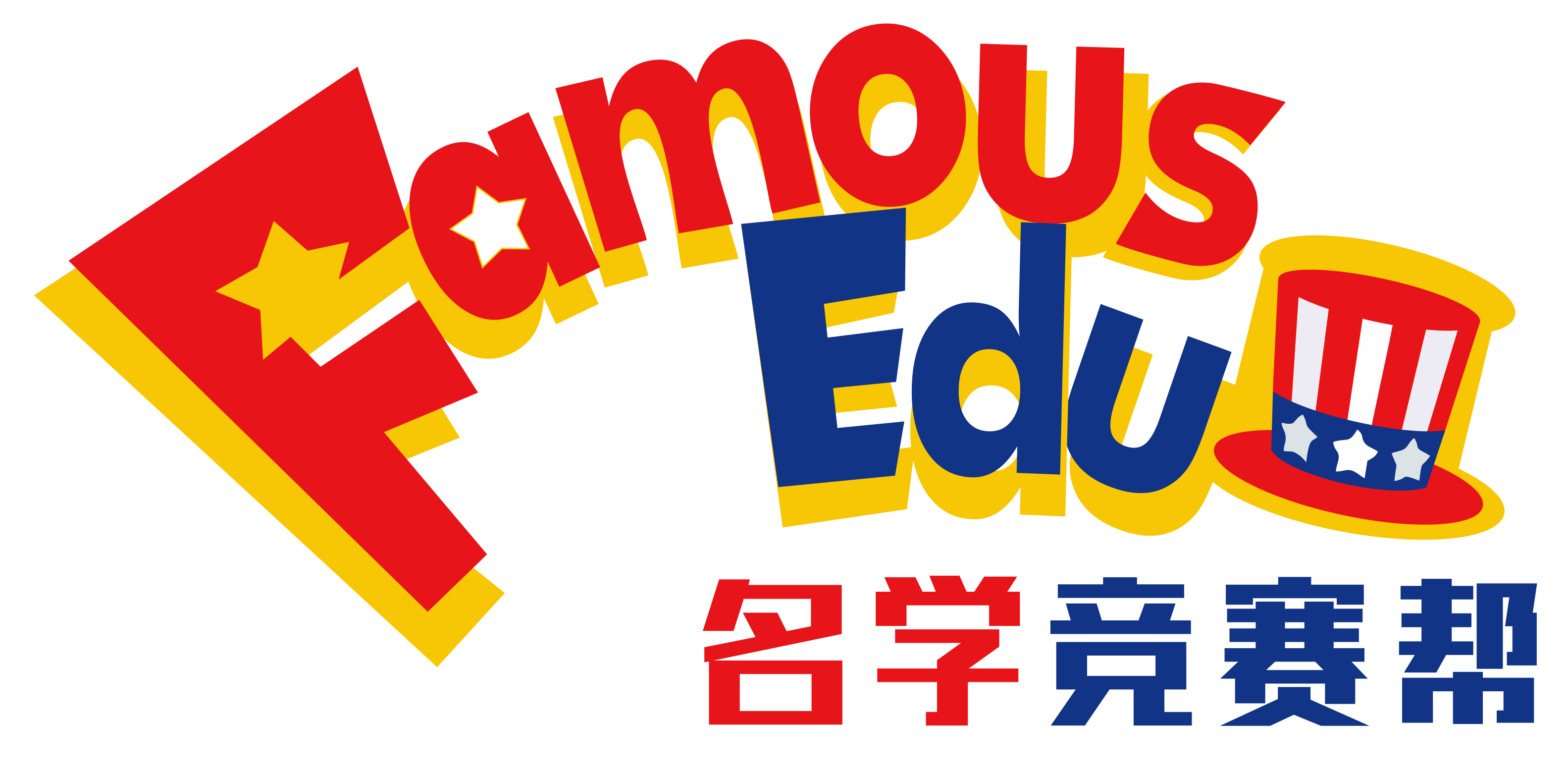2015年 AMC12 B卷
2015 AMC 12B Problems
Problem 1
What is the value of 2 - (-2)-2 ?

Problem 2
Marie does three equally time-consuming tasks in a row without taking breaks. She begins the first task at 1:00 PM and finishes the second task at 2:40 PM. When does she finish the third task?
![]()
Problem 3
Isaac has written down one integer two times and another integer three times. The sum of the five numbers is 100, and one of the numbers is 28. What is the other number?
![]()
Problem 4
David, Hikmet, Jack, Marta, Rand, and Todd were in a 12-person race with 6 other people. Rand finished 6 places ahead of Hikmet. Marta finished 1 place behind Jack. David finished 2 places behind Hikmet. Jack finished 2 places behind Todd. Todd finished 1 place behind Rand. Marta finished in 6th place. Who finished in 8th place?
(A) David (B) Hikmet (C) Jack (D) Rand (E) Todd
Problem 5
The Tigers beat the Sharks 2 out of the 3 times they played. They then played N more times, and the Sharks ended up winning at least 95% of all the games played. What is the minimum possible value for N?
![]()
Problem 6
Back in 1930, Tillie had to memorize her multiplication facts from 0 x 0 to 12 x 12. The multiplication table she was given had rows and columns labeled with the factors, and the products formed the body of the table. To the nearest hundredth, what fraction of the numbers in the body of the table are odd?
![]()
Problem 7
A regular 15-gon has L lines of symmetry, and the smallest positive angle for which it has rotational symmetry is R degrees. What is L + R ?
![]()
Problem 8
What is the value of ![]() ?
?
![]()
Problem 9
Larry and Julius are playing a game, taking turns throwing a ball at a bottle sitting on a ledge. Larry throws first. The winner is the first person to knock the bottle off the ledge. At each turn the probability that a player knocks the bottle off the ledge is ![]() , independently of what has happened before. What is the probability that Larry wins the game?
, independently of what has happened before. What is the probability that Larry wins the game?

Problem 10
How many noncongruent integer-sided triangles with positive area and perimeter less than 15 are neither equilateral, isosceles, nor right triangles?
![]()
Problem 11
The line 12x + 5y = 60 forms a triangle with the coordinate axes. What is the sum of the lengths of the altitudes of this triangle?
![]()
Problem 12
Let a, b, and c be three distinct one-digit numbers. What is the maximum value of the sum of the roots of the equation (x - a)(x - b) + (x - b)(x - c) = 0 ?
![]()
Problem 13
Quadrilateral ABCD is inscribed in a circle with ∠BAC = 70°, ∠ADB = 40°, AD = 4 and BC = 6. What is AC?
![]()
Problem 14
A circle of radius 2 is centered at A. An equilateral triangle with side 4 has a vertex at A. What is the difference between the area of the region that lies inside the circle but outside the triangle and the area of the region that lies inside the triangle but outside the circle?
![]()
Problem 15
At Rachelle's school an A counts 4 points, a B 3 points, a C 2 points, and a D 1 point. Her GPA on the four classes she is taking is computed as the total sum of points divided by 4. She is certain that she will get As in both Mathematics and Science, and at least a C in each of English and History. She thinks she has a ![]() chance of getting an A in English, and a
chance of getting an A in English, and a ![]() chance of getting a B. In History, she has a
chance of getting a B. In History, she has a ![]() chance of getting an A, and a
chance of getting an A, and a ![]() chance of getting a B, independently of what she gets in English. What is the probability that Rachelle will get a GPA of at least 3.5?
chance of getting a B, independently of what she gets in English. What is the probability that Rachelle will get a GPA of at least 3.5?

Problem 16
A regular hexagon with sides of length 6 has an isosceles triangle attached to each side. Each of these triangles has two sides of length 8. The isosceles triangles are folded to make a pyramid with the hexagon as the base of the pyramid. What is the volume of the pyramid?
![]()
Problem 17
An unfair coin lands on heads with a probability of ![]() . When tossed n times, the probability of exactly two heads is the same as the probability of exactly three heads. What is the value of n ?
. When tossed n times, the probability of exactly two heads is the same as the probability of exactly three heads. What is the value of n ?
![]()
Problem 18
For every composite positive integer n, define r(n) to be the sum of the factors in the prime factorization of n. For example, r(50) = 12 because the prime factorization of 50 is 2 x 52, and 2 + 5 + 5 = 12 . What is the range of the function r, {r(n): n is a composite positive integer} ?
(A) the set of positive integers
(B) the set of composite positive integers
(C) the set of even positive integers
(D) the set of integers greater than 3
(E) the set of integers greater than 4
Problem 19
In ∆ABC, ∠C = 90° and AB = 12. Squares ABXY and ACWZ are constructed outside of the triangle. The points X, Y, Z, and W lie on a circle. What is the perimeter of the triangle?
![]()
Problem 20
For every positive integer n, let mod5 (n) be the remainder obtained when n is divided by 5. Define a function f: {0, 1, 2, 3, ...} x {0, 1, 2, 3 ,4} → {0, 1, 2, 3, 4} recursively as follows:
![\[f(i,j) = \begin{cases}\text{mod}_5 (j+1) & \text{ if } i = 0 \text{ and } 0 \le j \le 4 \text{,}\\ f(i-1,1) & \text{ if } i \ge 1 \text{ and } j = 0 \text{, and} \\ f(i-1, f(i,j-1)) & \text{ if } i \ge 1 \text{ and } 1 \le j \le 4. \end{cases}\]](http://nwzimg.wezhan.cn/contents/sitefiles2050/10251729/images/43999510.png?)
What is f(2015, 2) ?
![]()
Problem 21
Cozy the Cat and Dash the Dog are going up a staircase with a certain number of steps. However, instead of walking up the steps one at a time, both Cozy and Dash jump. Cozy goes two steps up with each jump (though if necessary, he will just jump the last step). Dash goes five steps up with each jump (though if necessary, he will just jump the last steps if there are fewer than 5 steps left). Suppose that Dash takes 19 fewer jumps than Cozy to reach the top of the staircase. Let s denote the sum of all possible numbers of steps this staircase can have. What is the sum of the digits of s?
![]()
Problem 22
Six chairs are evenly spaced around a circular table. One person is seated in each chair. Each person gets up and sits down in a chair that is not the same chair and is not adjacent to the chair he or she originally occupied, so that again one person is seated in each chair. In how many ways can this be done?
![]()
Problem 23
A rectangular box measures a x b x c, where a, b, and c are integers and 1 ≤ a ≤ b ≤ c. The volume and the surface area of the box are numerically equal. How many ordered triples (a,b,c) are possible?
![]()
Problem 24
Four circles, no two of which are congruent, have centers at A, B, C, and D, and points P and Q lie on all four circles. The radius of circle A is ![]() times the radius of circle B, and the radius of circle C is
times the radius of circle B, and the radius of circle C is![]() times the radius of circle D. Furthermore, AB = CD = 39 and PQ = 48. Let R be the midpoint of
times the radius of circle D. Furthermore, AB = CD = 39 and PQ = 48. Let R be the midpoint of ![]() . What is AR + BR + CR + DR ?
. What is AR + BR + CR + DR ?
![]()
Problem 25
30° counterclockwise and then flies j + 1 inches straight to point Pj+1. When the bee reaches P2015 she is exactly ![]() inches away from P0, where a, b, c and d are positive integers and b and d are not divisible by the square of any prime. What is a + b + c + d ?
inches away from P0, where a, b, c and d are positive integers and b and d are not divisible by the square of any prime. What is a + b + c + d ?
![]()





